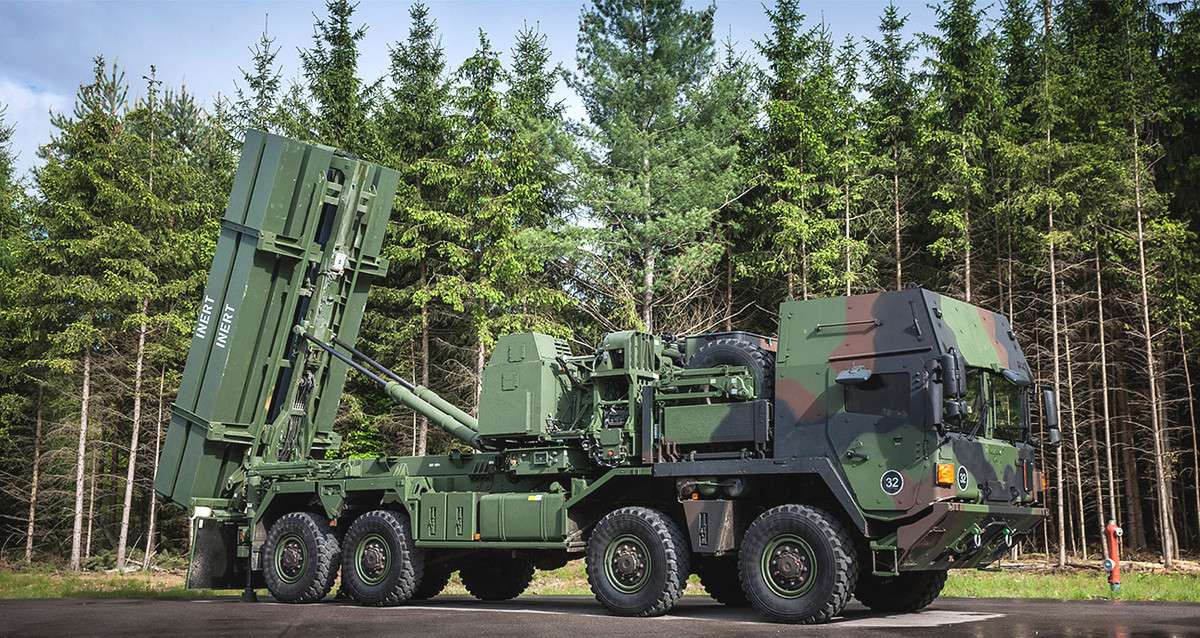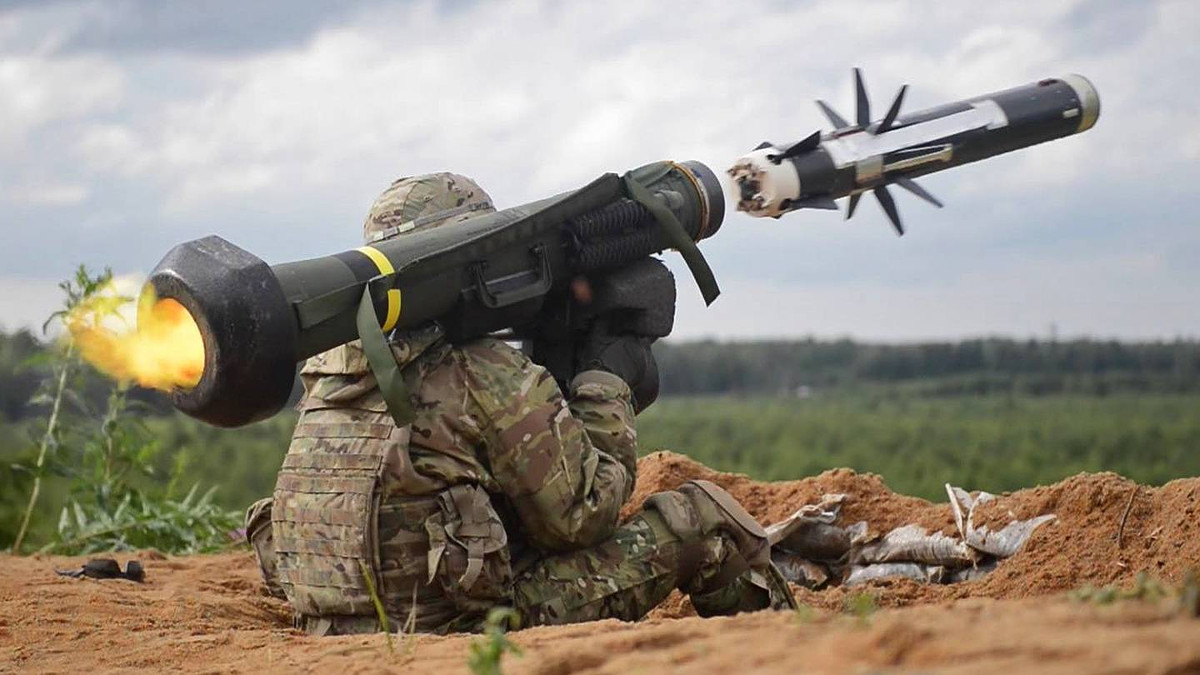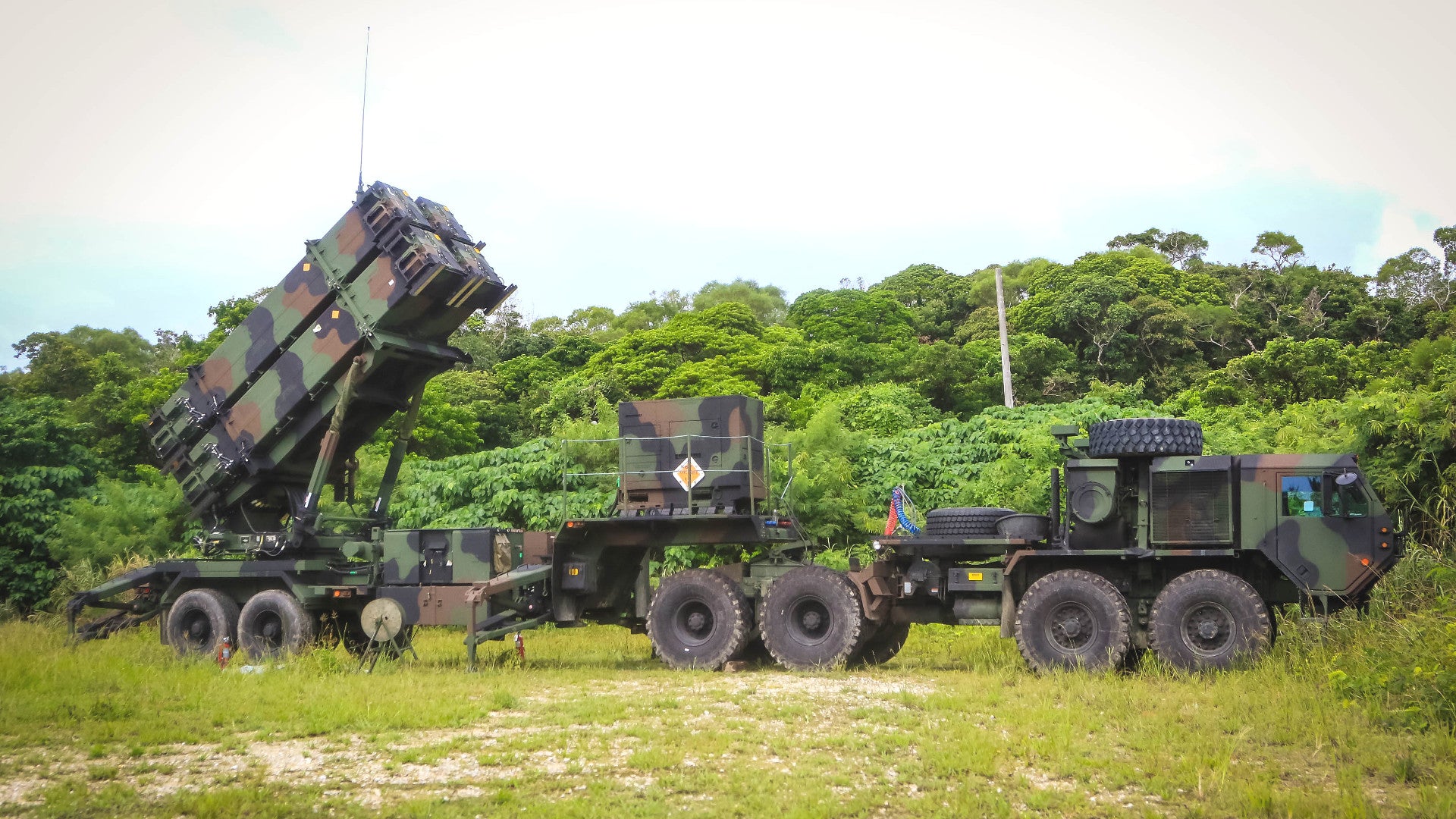Ukraine is looking to purchase a small number of surface-to-air missile systems from the United States, possibly Patriots, amid a recent spike in tensions with separatists in the country’s eastern Donbas region, as well as their chief backer, Russia. The move also comes as the U.S. government is expanding arms deals with the government in Kiev, including the sale of Javelin anti-tank missiles, and has even recently bought a Ukrainian air defense radar for its own analysis and training use.
On Aug. 28, 2018, Ukrainian Ambassador to the United States Valeriy Chaly explained his country’s desire to buy unspecified American-made air defense weapons in an interview with the country’s Radio NV. Chaly said that Ukraine’s President Petro Poroshenko had raised the matter directly with U.S. President Donald Trump during a brief meeting the two had in Brussels on the sidelines of the NATO summit in July 2018. He also said that authorities in Kiev had discussed the possible purchase separately with U.S. National Security Advisor John Bolton.
“Ukraine has requested to official Washington for a possible sale of air defense systems worth $750 million for one unit,” Chaly told Radio NV, according to a translation from Defence Blog. “If necessary, [Ukraine could purchase] at least three appropriate military complexes for the Ukrainian army.”
Though Chaly did not say what American-made air defense system Ukraine was interested in acquiring, the figures he outlined would be well in line with Raytheon’s Patriot surface-to-air missile system. Earlier in 2018, the U.S. government approved the sale of four Patriot Advanced Capability-3+ (PAC-3+) systems to Sweden in a deal worth a total of approximately $3.2 billion. This would mean each system cost $800 million, but it is worth noting that the complete package included training and other support services and ancillary equipment that would not be part of the base system’s unit cost.

In addition, that Ukraine is only interested in buying three complete systems at most points to a longer-range and more strategically-focused system, such as Patriot. This would be an impractical number of short- or medium-range systems, which require much greater density to be useful across a broad front.
Officials in Kiev could also be looking at the Medium Extended Air Defense System (MEADS), which American defense contractor Lockheed Martin makes in cooperation with the European missile consortium MBDA. MEADS can already fire the latest Patriot PAC-3 Missile Segment Enhancement (MSE) interceptor and Lockheed and MBDA are pitching it as a modular system that could accommodate other missile types in the future.

Regardless, adding a modern long-range surface-to-air missile system such as Patriot to Ukraine’s arsenal would significantly bolster the country’s air defenses and help counter increasing threats from Russia. Patriot’s ballistic missile defense capabilities, in particular, could be an important challenge to Russian Iskander ballistic missiles situated on the Crimean Peninsula, which the Kremlin illegally seized from Ukraine in 2014. Earlier in 2018, Russia also deployed aircraft capable of carrying the Kh-47M2 Kinzhal air-launched ballistic missile, an Iskander derivative, to its Southern Military District, another move that seemed to be, in part, a signal aimed at the government in Kiev.
Patriot has gotten a good chance to demonstrate its capabilities, especially in the ballistic missile defense role, recently in Saudi Arabia. The Saudis have had to employ these surface-to-air missile systems on many occasions to defend their cities against ballistic missile attacks from Houthi rebels in neighboring Yemen.
The threat posed by Russia’s Iskander in general, as well as ballistic missile developments elsewhere, especially in North Korea, have led to a certain renaissance for Patriot around the world, especially in combination with the improved capabilities that Lockheed Martin’s PAC-3 MSE interceptor offers, which you can read about in more detail here. There is also work in progress on finding ways to reduce the cost of each missile. Romania and Poland, in addition to Sweden, are in the process of acquiring Patriots now and, if Ukraine is any indication, there could be more sales to come in the near future.
At present, the Ukrainian military relies on older Soviet-era iterations of the S-300 long-range surface-to-air missile system for high-altitude, long-range air defense. Earlier in 2018, it also reactivated a small number of S-300V systems, which are more geared toward defending against tactical ballistic missiles.

Since at least the beginning of August 2018, there have been increasing fears that Russian-backed separatists, again supported by actual Russian troops, might be positioning themselves for a renewed offensive in eastern Ukraine. This, in turn, may have driven Ukrainian officials to look for additional ways to bolster its defenses against a more overt Kremlin intervention into the conflict. The assassination of Alexander Zakharchenko, a major rebel leader, by unknown parties on Aug. 31, 2018, has only further inflamed tensions, as we at The War Zone
If the U.S. government was to approve the sale of a system such as Patriot to Ukraine, it could similarly reflect an even more significant shift in Washington’s military cooperation country. The surface-to-air missile systems would be, by far, the most advanced weapons the United States had ever sold to Ukraine.
President Trump’s administration’s decision to green-light the sale Javelin anti-tank guided missiles to Ukraine was already a major departure from President Barack Obama’s policies. The Obama administration had limited arms deals with Kiev to “defensive” and non-combat related military items, such as trucks and medical supplies.
A sale of Patriots would also be immensely more expensive than buying Javelins, which could be a factor for cash-strapped Ukraine. The purchase of more than 200 of the anti-tank missiles, along with nearly 40 launchers and other equipment and services, was valued at less than $50 million in total, a fraction of what a single surface-to-air missile system would set the country back, according to its own ambassador to the United States.

Still, there’s little to suggest that Trump personally or his administration would be hesitant in principle to sell Patriots, or similar surface-to-air missiles systems, to Ukraine. Trump has been a strong advocate for promoting the sale of American-made weapons abroad and has formed a close relationship with Ukraine’s President Poroshenko.
There is also the possibility that both countries could find ways to make such a sale more mutually attractive. Earlier in September 2018, the U.S. Army took delivery of a Ukrainian-made 36D6M1-1 air defense radar.
This is a modernized version of a Soviet-era radar, also known as Tin Shield, variants of which remain in use in Russia and other countries, including Iran, as a component of S-300 surface-to-air missile systems. The manufacturer, the Iskra Scientific and Production Complex, claims that the trailer-mounted S-band radar can spot and track targets at both high and low altitudes and can function in a missile defense role.
It’s unclear how long this deal between Iskra and the U.S. Army has been in the works. In 2017, Ukroboronprom, Ukraine’s government-run arms broker, declared that a Russian company, KIT, LLC, had attempted to block the Ukrainian firm from fulfilling any contracts due to a legal dispute over unpaid patent licensing fees. Ukrainian authorities rejected those claims and countered by accusing KIT of being a fraudulent company that Iskra employees had established in order to embezzle funds.

It seems almost certain that the 36D6M1-1 is bound for the U.S. Army’s National Ground Intelligence Center, which maintains an extensive reference collection of foreign-made defense hardware. Intelligence analysts there would examine it in detail, a process known as Foreign Materiel Exploitation, or FME, in order to determine its exact capabilities and weaknesses in order to help the U.S. military better understand the potential threat.
The U.S. Army could also roll it out for training exercises, giving American aviators a real-world hazard to practice with. At the same time, it would allow them to get a better sense for the capabilities of their countermeasures and the efficacy of their tactics, techniques, and procedures for suppressing and destroying enemy air defenses. The radar could similarly help the U.S. military in the development of new defensive systems, aircraft designs, and relevant doctrine.
It is possible that Ukraine could offer more sales of advanced versions of Soviet-era systems to the United States as an offset against buying more modern American-made weapons. With the U.S. military increasingly focused on potential high-end conflicts against possible opponents, such as Russia and China, there is likely an even greater demand for access to examples of any and all foreign military technology that could help ensure that American troops maintain a qualitative edge.
It may be that Washington’s and Kiev’s interests are now sufficiently aligned that we could soon see Patriot missile batteries appear in Ukraine and more deliveries of Ukrainian-made weapon systems arrive in the United States.
Contact the author: jtrevithickpr@gmail.com
